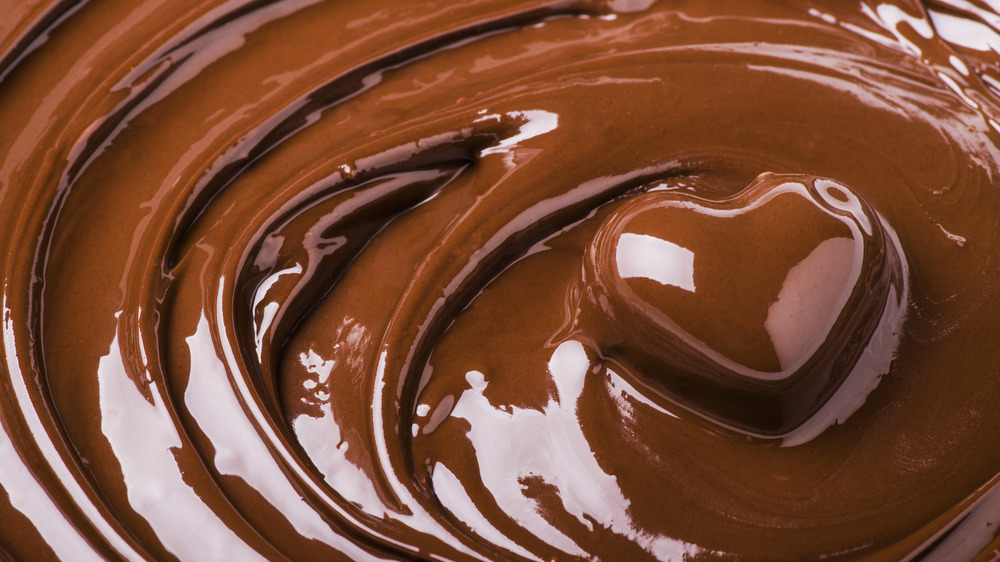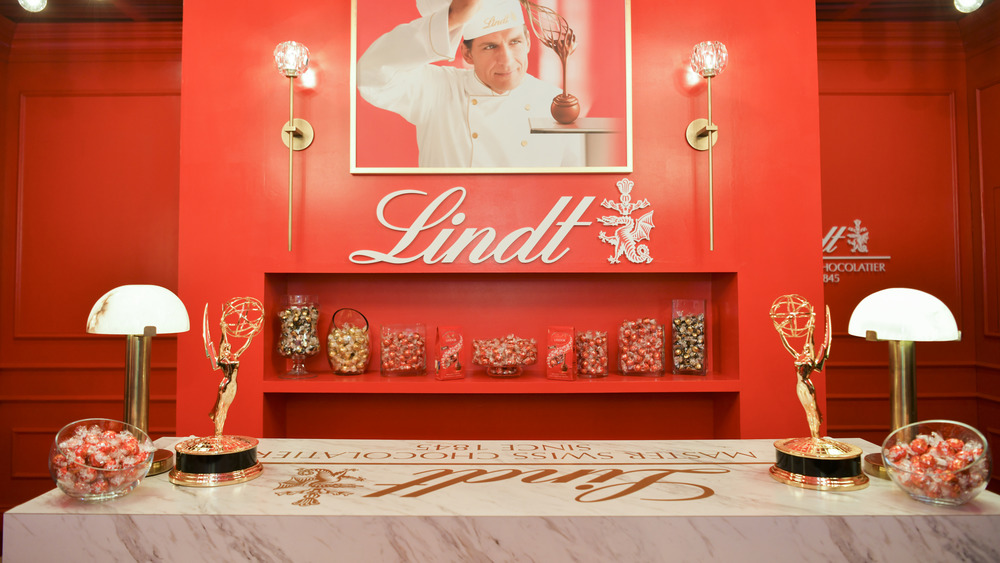The Untold Truth Of Lindt
Chocolate is a big deal in Switzerland. So big that the Swiss are responsible for producing 180,000 tons of chocolate a year. Of that, 39 percent is sold locally, and the rest is exported overseas. The country's dependence on chocolate isn't something that's developed overnight, either, since as far back as 1806, the city of Vevey — which today claims an 8-meter high fork in Lake Geneva (pictured above) as a big tourist attraction (via Alimentarium) — was already the site of seven chocolate factories, and known to be a famous chocolate hub (via Alpenwild).
It should then come as no surprise that globally, some of the biggest names in chocolate are Swiss. François-Louis Cailler was responsible for inventing a machine that mass-produced pressed chocolate. Philippe Suchard is credited for inventing a mixing machine that could blend sugar and cocoa. Daniel Peter, who lived close to Henri Nestlé, discovered the secret to making milk chocolate.
Then there is Rodolphe Lindt, who produced the first-ever fondant chocolate by using a technique called "conching," which turns the gritty sugar and cocoa confection into the smooth, melt-in-your-mouth treat that it is today (via House of Switzerland). Rodolphe Lindt's discovery couldn't have come about without the input of his brother August, who thought that the way chocolate was being made and sold in the 1800s (rough, bitter, and shaped into molds by hand) could be greatly improved with a few tweaks.
Rodolphe Lindt's discovery changed chocolate making
Those tweaks included extracting liquid from chocolate paste and adding cocoa butter to make the mass smoother. The mixture was then put into his mixing machine, known as a conche, and left to run undisturbed. When it was done, instead of a gritty chocolate mix, Rodolphe discovered a dark, velvety chocolate that was not only easy to mold, but also melted easily. Lindt called his product "chocolat fondant," or melting chocolate. He received a patent for this discovery, and kept it a secret until the early 20th century, when a book called The Manufacture of Chocolate was published and the procedure was described in detail (via Lindt-Spruengli).
Rodolphe Lindt's story is only half of the narrative that makes up the history of one of the world's most famous chocolate makers. The other half of the company story begins in 1845, when David Sprüngli-Schwarz and his son Rudolf Sprüngli-Ammann decided they would become the first to make and sell chocolate in solid form in Switzerland's German speaking region. Success came quickly; in just two years they moved to a larger production facility on the upper end of Lake Zurich, and by 1859, they opened a second site in Zurich's Paradeplatz (via Lindt-Spruengli).
But the company didn't take its first steps toward chocolate greatness until one of Rudolf Sprüngli-Ammann's sons Johann Rudolf decided to reach out to Rodolphe Lindt about his chocolate conching process and his conch machine invention in 1879.
Lindt and Sprungli is the result of a 19th century merger
The outreach turned into a 19th century merger, which cost 1.5 million gold francs (roughly $110.5 million today), spawned the company that we know today as Lindt & Sprüngli.
In its narrative about the company's history, Lindt & Sprüngli says the next significant invention that would change their chocolate production line after the 19th century conch happened nearly a century later, in 1972 with the development of the "Lindt & Sprüngli Chocolate Process LSCP." The process is said to have required less energy and space, while guaranteeing the quality of the product they were producing.
While 2020 might be a year many folks might choose to forget, it is a year to remember for Lindt & Sprüngli, which celebrated its 175th anniversary with the opening of a Lindt Home of Chocolate in Zurich. The facility houses the world's largest Lindt Chocolate Shop, and a research center meant to improve and modernize the chocolate making process. It even has a rubbernecking component for tourists who want to see how Swiss chocolates are produced on a scale as massive as Lindt's.
Today, Lindt doesn't just sell chocolate under the Lindt and Lindor labels. It's also behind a stable of global brands that include Ghirardelli, Russell Stover, Caffarel, and Hofbauer-Küfferle.


